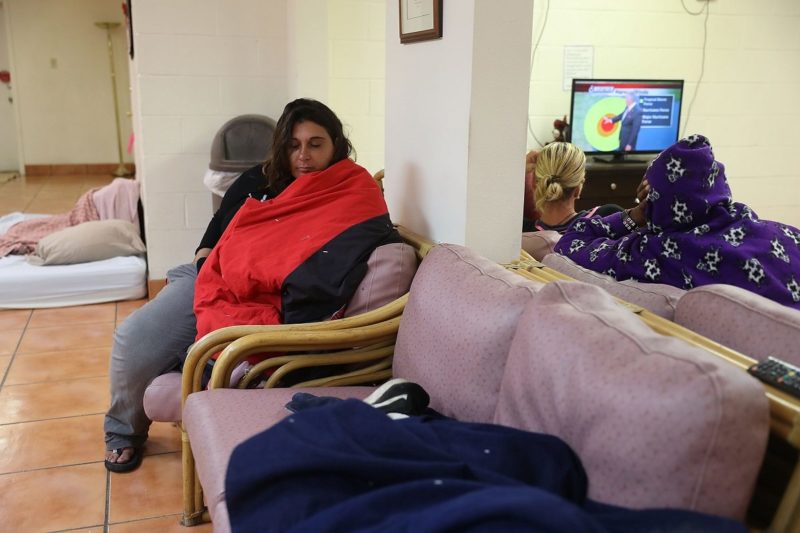When Hurricane Harvey Hit, Texas Abortion Providers Stepped Up
At one Texas clinic, staff gave up their Labor Day holiday for patients who had scheduled abortions during the storm, and Whole Woman's Health offered free abortions to those whose health care was disrupted by the weather.

“Pregnancy doesn’t stop because of a hurricane,” said Kathy Kleinfeld, the director of Houston Women’s Clinic, the city’s largest abortion clinic.
In addition to all the other devastating blows Houston-area residents weathered from Hurricane Harvey, those women who had previously scheduled an abortion or who suddenly realized they had an unwanted pregnancy were in particularly difficult straits. Area clinics were closed immediately after the storm, and in any cases, many potential patients had no way of reaching a facility even if one was open.
Fortunately, due to a quite extraordinary mobilization effort on the part of abortion providers in Houston and elsewhere, the situation for those needing abortions improved considerably and far quicker than one would have had reason to believe.
Houston Women’s Clinic and the Houston facility of Planned Parenthood of the Gulf Coast both managed to reopen within a week of Harvey’s first landfall. On the first day of reopening, Kleinfeld said her clinic saw 56 patients. Given Texas’ abortion law, which requires two visits to a clinic separated by at least 24 hours, about 20 procedures were performed that day; the rest were scheduled for later in the week.
When accessing abortion care, time is of the essence. A delay of even a few days can push a first-trimester procedure into a second-trimester one, which is more costly. And Texas bans abortions after 20 weeks, except under severely limited conditions. Women over such a gestational limit would have to be counseled to travel to New Mexico, the nearest place where they could then receive an abortion.
There was such a backlog of women whose abortions were delayed while the clinic was closed and who needed to reschedule that the staff at Houston Women’s Clinic—who had no shortage of Harvey-related issues of their own to deal with, such as flooded dwellings—agreed to keep the clinic open over Labor Day.
But abortion providers beyond Houston rose to the challenge of Harvey. As Fatimah Gifford, vice president of communications of the Whole Woman’s Health (WWH) organization that operates four abortion clinics in Texas and others nationwide, said, “As soon as we learned of the hurricane’s landfall, we knew we had to be there for our sister providers in Houston, and we worried about the women who would need abortions.”
WWH quickly announced it would provide no-cost abortions for any women who had been affected by the hurricane. This announcement was coupled with a high-profile fundraising effort on the part of WWH, in concert with other Texas pro-choice organizations such as the Lilith Fund, to aid with the cost of travel and lodging.
Dr. Bhavik Kumar, medical director of the WWH clinics in Texas, made clear how the hurricane had affected the abortion experiences of his patients. He shared the story of a 16-year-old patient from a small town in southeast Texas who came to WWH’s Austin clinic. She, her mother, and several siblings had been holed up in an Austin hotel room since their town had been evacuated. The tension of being cooped up in one room and uncertain what awaited them back home escalated dramatically when the mother realized that the teen was pregnant.
Kumar ascertained the teen was 17 weeks pregnant. The visit on the second day, when the young woman would actually have her procedure, became a particularly tense one: People were being allowed back to the patient’s hometown, and the mother was desperately eager to see what had become of their house. Moreover, she was concerned with starting the several hours’ drive home as quickly as possible in order to arrive before an announced curfew. But an abortion at 17 weeks requires several hours of cervical preparation, and the doctor had to gently but firmly inform the mother that his priority was his patient’s safety, and that the procedure could not be rushed.
He spoke about another Houston-area evacuee who came to the clinic thinking she wanted a medication abortion. In this regimen, the patient takes the first drug, mifepristone, at the clinic; the second drug, misoprostol, taken later when the patient is home, causes the expulsion of the pregnancy. But this regimen, which also can cause nausea and diarrhea in some patients, necessitates reliable access to a bathroom. This patient, en route back to her home, simply did not know whether she would find a functioning bathroom if necessary. After being educated what the medication abortion regime entailed, she opted for an aspiration surgical abortion.
This rapid mobilization—and generosity—on the part of Texas abortion providers and advocacy organizations is not unprecedented. When Hurricane Katrina struck in 2005, various abortion providers, including those in Texas, offered no-cost abortions to women fleeing New Orleans. (In yet another similarity with Katrina, fanatical anti-abortion preachers once again attributed the natural disaster to punishment for tolerance of abortion and LGBTQ people.)
As this hurricane season will apparently wreak havoc far and wide, the provider community will undoubtedly do as it always does and all it can to lessen the burdens of those who need abortions at the worst possible time.
